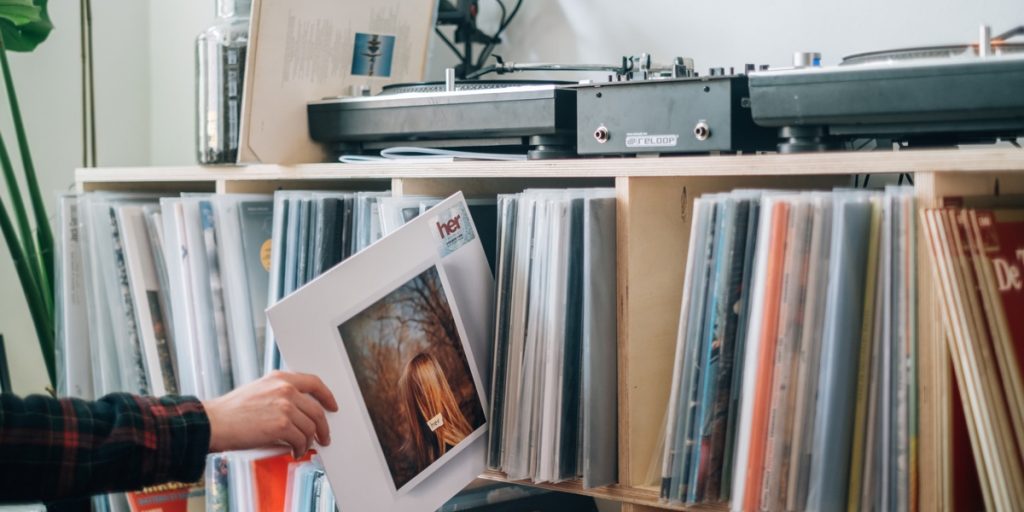Photo Credit: Jonas Leupe
More catalog tracks are charting on Spotify than ever before. So Playlist Push has shifted its focus — helping ‘old’ become ‘new’ again.
Since 2020, the portion of Spotify’s Global Weekly Top Songs represented by catalog has increased by 155%, according to the company. The streaming platform defines catalog as any track over 18 months old.
Insights from the study make it abundantly clear that promoting older tracks is working. Almost a third of 2022’s charting songs are catalog, and fans are now searching for and streaming older tracks. Nearly three-quarters of active streams (from listener playlists, album pages, artist profiles, and liked songs) are catalog. For listeners under 26, the portion of total streams represented by music from the 80s has increased by 45% during the last four years.
The shift isn’t happening entirely by accident. Behind the scenes, players like Playlist Push are helping to intensify the trend. “This year we’re promoting 60% more catalog tracks versus last year, and the trend continues to grow,” George Goodrich, co-founder of Playlist Push, told Digital Music News.
As catalog claims a more significant part of the spotlight, artists and labels want to monetize their own. Playlist Push has set its sights on doing precisely that — for all rights holders playing the catalog game. The company recently joined forces with DMN to further expand its catalog successes.
Publishers and catalog owners are also seizing the opportunity to increase the ROI of their IP, whether recently acquired or owned for decades.
According to Goodrich, “This year, we’ve had publishers and labels going into their archives to find tracks that never got a chance to reach their full potential because streaming and playlist promotion didn’t exist when they were released.”
Reenergizing, boosting, and exploiting these long-owned catalogs is now a music industry focus. Investors sitting on massive IP acquisitions are betting that there’s still more juice in those catalogs. But they need a promotional engine to beef up those purchases — and recoup millions in acquisition costs.
Playlist Push Director of Strategy Alex Mitchell-Hardt spoke about how robust the catalog landscape has become. His company currently manages catalog campaigns from both major labels and independent artists. “Our business when we first started was all about ‘new.’ We were only promoting new singles,” Mitchell-Hardt explained. “Now we see more labels and publishers promoting older songs, recognizing the long tail in revenue and consumption that streaming services provide.”
For artists, this trend of promoting the ‘old’ puts an end to the constant pressure of making a big splash with a new track.
Artists also realize that they need to do more than just push newer stuff. More artists are now exploiting their older tracks for what they’re worth. They no longer have to wait to release a new single to see a spike in streams.
Goodrich explained that artists’ catalogs could be smartly leveraged to raise awareness of new releases. “When you look at the bigger picture, listeners simply want to hear great music and aren’t concerned with when it was released. We’ve also seen artists who’ve experienced a long hiatus promote a catalog song to increase discoverability for a new and upcoming song.”
For indie producers and creators sitting on substantial catalogs, Playlist Push is breathing new life into old.
Sync placements are also propelling catalogs into the limelight. After a juicy placement, tracks from any era can pop up on TikTok and Spotify to score a significant audience.
It’s no secret that sync opportunities can completely redefine the value of a catalog. Following the placement of ‘Running Up That Hill’ on Netflix’s Stranger Things, Kate Bush’s catalog saw a surge of 439%, with streams exploding on all platforms. Analyzing a set of syncs with Netflix, a Spotify study reveals that artist discoveries typically jump between 50-6,000% — and the rest of the catalog also gets a boost.
Moreover, TikTok is driving the trend of viral videos shuttling listeners onto streaming platforms. Spotify reports that one track’s viral moment can trigger a 70% increase in streams for the rest of the artist’s music.
So how does Playlist Push work?
Playlist Push aims to give an organic lift to otherwise stagnant catalogs. The company is utilizing its extensive network of playlist curators to thread tracks into prominent playlists. Playlist Push also has the tools to line up major sync opportunities that set up artists and catalog owners for growth. With multiple complementing campaign tools, Playlist Push is giving catalog the marketing boost it needs to shine.
The company finds ways to maximize the value of giant, under-exploited catalogs. According to Goodrich, “It could be a catalog a publisher has had for over 20 years.”
But the company is working with more than just high-profile IP. Smaller, niche catalogs that didn’t have marketing dollars to get the word out are now amplifying promotion with Playlist Push.
Massive shifts in the overall music industry landscape have made it more challenging than ever to break something new. So why not start with something old?
While discussing ever-changing listening habits and grabbing audience attention, Mitchell-Hardt said, “It all comes down to getting the music in the ears of the right audience and that’s what our platform is designed to do.”
Goodrich added that Playlist Push campaigns drive artists forward, “Our campaigns help build your streaming presence and feed the Spotify algorithm.”

